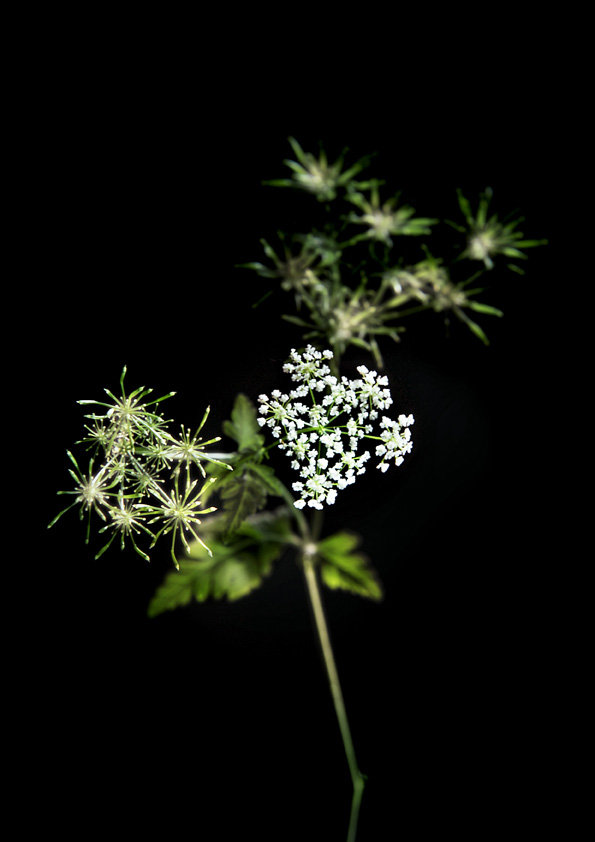Urban Growths
dal 22/7/2010 al 25/9/2010
Segnalato da
Claudia Angelmaier
Nina Ebbinghaus
Claudia Fahrenkemper
Annabelle Furstenau
Ralph Samuel Grossmann
Helmut Volter
Christoph Schaden
22/7/2010
Urban Growths
Alfred Ehrhardt Stiftung, Berlin
The group show brings together six contemporary positions in photography dealing with the complex theme of plants in the city. Participating artists: Claudia Angelmaier, Nina Ebbinghaus, Claudia Fahrenkemper, Annabelle Furstenau, Ralph Samuel Grossmann and Helmut Volter.

Curator Dr. Christoph Schaden, Cologne
Those sitting on their idle seats in the country are ridiculous in their plant-like existence.
Hagedorn
Plant, neutral...a universal word uniting all that grows.
Jacob and Wilhelm Grimm
Ideas grow, cities grow, plants grow. This year the Alfred Ehrhardt Foundation is dedicating its
summer exhibition, titled Urban Growths, to a surprising aspect of contemporary photography.
The group show brings together six contemporary positions in photography dealing with the
complex theme of plants in the city.
With Urban Growths. Positions in Contemporary Plant Photography the Alfred Ehrhardt Foundation
is continuing its series of exhibitions featuring contemporary photographers, who—in keeping with
Alfred Ehrhardt’s thematic focus—examine nature and the construction of the natural.
In his 2006 Handbuch der wildwachsenden Großstadtpflanzen (Handbook of Wild-growing
Metropolitan Plants) the Leipzig artist Helmut Völter managed to redefine the floral in urban
space. "At first glance the city is an alien, if not hostile, environment for plants. The bare ground
that remains in between densely packed buildings is underrun by the subterranean structures of
the city, loaded with contaminants, trampled and flattened by pedestrians and cars. A closer look,
an observant walk, shows that despite these difficult conditions a wild-growing, independent flora
has developed in the city." The painstaking photo documentations of Helmut Völter emphatically
contest the supposed niche existence that plants are said to lead in the city with images of
abandoned lots they have reclaimed. His research opens up a creative counter-perspective and
simultaneously serves as the starting point for the exhibition Urban Growths, which sometimes
even ventures a statement on civilization. For example, in her six-part color series Nina
Ebbinghaus from Dortmund documents types of plants that have clearly immigrated to Germany.
The "invaders" in these portraits include "aquatic migrants" and "naturalized" residents, which have
illicitly entered Germany by air or water.
In contrast, in her photographic works Claudia Angelmaier from Leipzig analyzes traditional,
"highly cultivated" images that have influenced collective visions of plants. Dürer’s works Das große
Rasenstück (The Great Turf) and Akelei (The Columbine) are each shown in large tableaus of
carefully arranged book reproductions. These compositions are not without irony in the way they
draw on the traditional images and projected notions of plants in urban "cultural space."
Annabelle Fürstenau offers a surgical view of the floral world. Her photographs are the result of
a laborious process of dissecting individual flowers and plants, in which their fragile components
laid out in sequence according to shape and size. For the viewer such systems of organization
evoke both a painful and aestheticizing distance to objects at hand. The work is a radical
investigation on the elements precisely defining contemporary plant species.
A series of photographs by Claudia Fährenkemper serves as a form of medial reassurance. The
vertical-format images consist of photograms, which were exposed in the sun directly at the site
where the plants were found. Life-sized motifs remain on the image carrier and have a bizarre
coloration. Fährenkemper consciously positions the print-like quality of the photogram between
anachronism and modernity. Finally, the photographs by Ralph Samuel Grossmann have an
arresting, signal-like appearance. The floral has returned to the vase in these explicitly pared-down
images. An artistic attempt at domestication, so it seems, which obviously wishes to explore color
abstraction in plant form. In these works urban growths stand alone as objects, but not as objects
of projection.
Participating artists: Claudia Angelmaier, Nina Ebbinghaus, Claudia Fährenkemper,
Annabelle Fürstenau, Ralph Samuel Grossmann and Helmut Völter.
A discussion with Helmut Völter and Dr. Christoph Schaden, punctuated by readings from
Handbuch der wildwachsenden Großstadtpflanzen, will take place on Sunday, August 22, 2010 at
2 pm.
Image: Nina Ebbinghaus, Riesen Bärenklaue (from the series Neubürger), 2009 © Nina Ebbinghaus
Press contact:
artpress – Ute Weingarten Tel: +49-(0)30 21961843 E-Mail: artpress@uteweingarten.de
photomarketing.de – Dr. Bernd Fechner
Tel: +49 (0)30 42019203 E-Mail: buero@photomarketing.de
Opening: Friday, July 23, 2010, 7 pm
Alfred Ehrhardt Stiftung
Auguststr. 75 - 10117 Berlin
Opening hours: Tues. to Sun. 11 am – 6 pm; Thurs. 11 am – 9 pm



